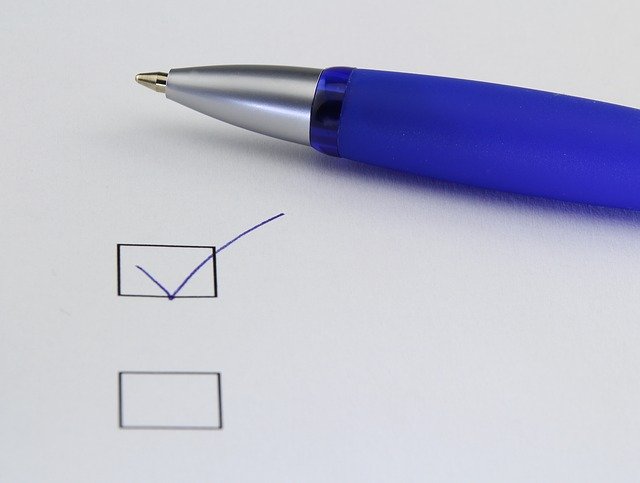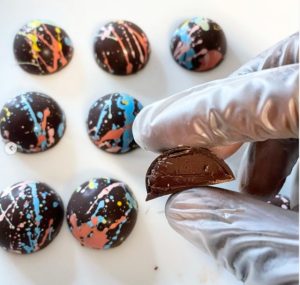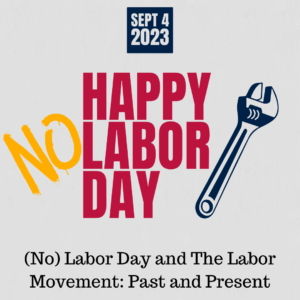
By: Catherine Daleo
Reading time: 6-7 minutes
“Seven billion souls that move around the sun,
Rolling faster, faster and not a chance to slow down,
Slow down.”
– Childish Gambino, Feels Like Summer
Multi-tasking vs. Single-tasking
It seems redundant, but slowing yourself down sometimes leads to increased productivity. That’s why for some people, single-tasking is better than multi-tasking.
Many of us pride ourselves on our ability to multitask.
We’re often listening to music or “watching” a video on our phones. Simultaneously, we do school work, check social media, cook, eat, or any combination of things.
Frequently we’re on our phone while we’re also streaming something. Or perhaps you’ve been on your phone while working on your laptop while watching something on television.
How often do we find ourselves at work doing two, three, four, or more things all at once?
Helping multiple customers while restocking; answering emails while writing a report; taking orders while preparing food and giving someone else their order at another window.
Even in school, you’re listening to your professor, taking notes, and actively trying to retain the information.
As I wrote this article, I went back and forth between writing, listening to Philip DeFranco on YouTube, and responding to emails. This is actually a lighter workload than what I usually immerse myself in. When you’re busy and have a lot on your plate, you tend to compensate by multitasking.
I myself am trying to work on my own time management. When eating or drinking coffee, I realized I always put on something to watch. It’s almost become a necessity of sorts, as background noise.
Which made me think, “Why can’t I be present in the moment or enjoy what I’m doing? Why do I need to distract myself?”
I believe we’re conditioned to think, at least subliminally, that if we not only work on but do multiple things at once, we’re not ‘productive.’ So I think it’s time to evaluate this habit or condition our society has adopted, and learn to adopt single-tasking as an ability.
Single-Tasking Day
February 22nd is Single-Tasking Day, and it inspired me to think about multitasking and write it.
Wherever we are, whatever we’re doing, we’re always doing something, and we tend to be multitasking, constantly, it seems.
Goodness forbid we do things (like checking your phone) while attempting to listen to someone. I say attempting because if you’re talking with someone while doing something, you won’t be fully capable of listening.
No matter how much you try, it’s challenging to block out ‘noise,’ as it’s called while doing active listening.
You may think you’re good at it, but I’m sorry to say, people are rarely as good as they think they are. If you’re distracted, you’re not actively listening – you’re hearing. This means you’re not properly absorbing the information you’re receiving, therefore not comprehending what’s said to you.
Think of the many people using their phones while driving, even though they know the dangers of doing so. When someone overestimates their ability to multitask while also driving, people can get hurt. Walking down the street while texting can cause you to get hurt if you’re not careful. This is another reason we need to rethink constantly doing things while doing other things.
The Effect of Multitasking
Constant multitasking and heightened productivity develop an interesting ‘side-effect,’ if you will.
We’re doing so many things at once; we seem to need to do something or be busy with something constantly. If we don’t have something to do, we feel a bit anxious. As though we are wasting time. Even if we’re doing one thing, we think, ‘Let’s add another task to work on while I do this to save time!‘
Unfortunately, this also leads to a higher likelihood of getting distracted.
While commendable to have good multitasking abilities and time management skills, we need to work on s l o w i n g down.
Just a bit, at least. As in, give ourselves some time to do one thing at a time. This has a lot to do with practicing mindfulness skills, knowing what’s in front of you or around you, and being present.
Slow Down
Single-tasking is about taking things one step at a time. It’s worth a shot to give ourselves a breather while doing things.
Whatever you’re working on, try to ONLY work on one facet of that thing or one item from your to-do list at a time. Utilize your to-do list to aid in your practicing this new skill.
That is, make a list of things that need to get done or you want to do. Number them in order of priority. Then, pick one device or medium to work on that thing while keeping only one tab or window open at a time. Don’t do anything else until you’ve completed what you are presently working on.
Avoid checking that text or email notification, if possible. Stop yourself from opening another tab to do something you suddenly remembered to do or thought to look up. Write it down if you need to come back to it later.
Resisting Distractions While Single-Tasking
Resist distractions to the best of your ability. And there is an important reason why we need to work on avoiding distractions.
According to Nicholas McGill on Inc.com, it takes an average of 23 minutes to regain your focus from when you get distracted by something [1].
Doing multiple things for something like work or school, the constant interruption to your concentration leads to more lost time. We have to restart where we left off instead of going with the flow and finishing a task initially.
Even coming back and finish something, we could’ve finished that task and the other task we started in less time altogether doing them each separately.
We may feel that we’re increasing our productivity by multitasking, and instead lose time in the long run, thus working less efficiently. Meaning we’re not working as productively as we thought we were. Because we’re completing multiple tasks, either way, we may assume that completing those tasks is more a result of multitasking.
There may be times when multitasking increases efficiency over doing one thing at a time. For argument’s sake, experiment with this idea of single-tasking, at least sometimes, then take the extra step to compare the results.
Depending on your workload, set aside at least an hour every day (set a timer if it helps you), and make a shortlist of what you think you want to reasonably accomplish in that hour. Rid yourself of distractions, and get to work. If you’re worried about distractions, put your phone on airplane mode, or shut it off completely.
Log Your Single-Tasking Experience
Keep a record of your experience in this personal time-management experiment. Log how much time each task takes, especially if it’s something you frequently do, and compare your results. Were you successful in accomplishing your tasks? Did you catch yourself getting distracted or almost getting distracted with something? What distracted you? How did you respond to the distraction or the urge to multitask? How did you feel at the end of the hour?
Then, record your experiences the rest of the day, when you’re multitasking. Answer the same questions above, including whether you got as much done while multitasking as during your single-tasking exercise.
Do this for at least a week or two. Then, compare your results.
What worked? What didn’t work? When were you more productive? What things distracted you the most or otherwise took your attention away? Did you feel more or less anxious after multitasking compared to single-tasking? How did you feel about your experience after observing and recording your personal habits?
As mentioned, some people multitask exceptionally well and efficiently do it, so they still resist distractions and accomplish everything they’ve assigned themselves. But, as I also mentioned, most of us really aren’t that focused when we’re splitting our attention between multiple tasks.
Do What’s Best for You
I am writing this article to tell you that it is okay to accept we need to slow down sometimes. Acknowledging that helps us improve our productivity and learn what does or does not work for us as individuals.
If, after you’ve done your single-tasking experiment, you find that you’re actually not productive when multitasking, that’s actually a good thing. It means you can take action to become more efficient.
If you’re trying to force efficiency through failed multitasking, it won’t do much to help you. If we want to be efficient and truly productive, we need to be objective with ourselves and our abilities.
And if you still want to multitask, that’s also fine! Just be mindful of how you can improve your multitasking abilities. Suppose you find that you are all over the place while multitasking, see how you can mitigate your distractions. If it’s your phone that keeps stealing your attention, then take steps to avoid that happening.
Don’t listen to the tv while you’re working on things. Put on a playlist with some instrumental music and just let it play without thinking about what will play next. If you can put it on a loop, even better. Something soothing and relaxing can really help you to focus while you’re working.
To sum it up – find what works best for you and adjust your habits to improve yourself. You may find that you are less stressed or anxious when you’re working and that you accomplish more!
So, give single-tasking a try, and see how you can become a better version of yourself!



